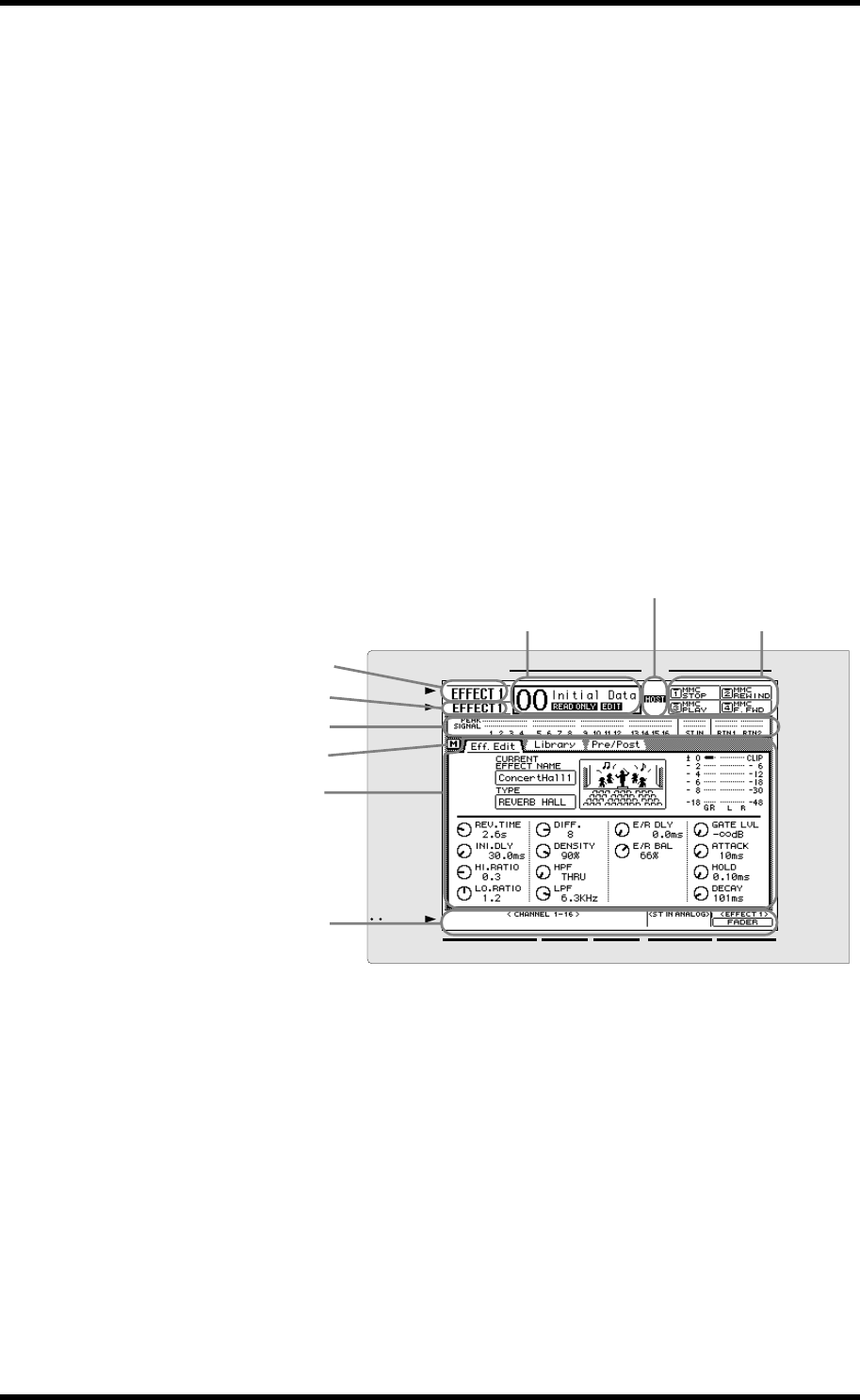
24 Chapter 3—Getting Around the User Interface
03D—Owner’s Manual
About the User Interface
The 03D user interface is both straightforward and easy to use. Apart from the GAIN
controls, [PAD] switches, scene memory buttons, and a few other buttons, there are
very few dedicated controls. The faders, [ON] buttons, and [SEL] buttons are multi-
function controls whose operation depends on the Mixing Layer and fader mode set-
tings. Mixing functions and configuration settings are organized into display pages,
with up to five related pages being grouped together. For example, digital input and cas-
cade pages are grouped together under DIO (digital I/O). Parameter selection and edit-
ing is carried out using the [CURSOR] buttons, [ENTER] button, and PARAMETER
wheel, which is detented for precise and accurate editing. An optional mouse can be
connected for quick navigation around the display and parameter setting.
Display
The large 320 x 240 dot display with fluorescent backlight provides clear indication of
mix settings and operating status. As well as showing parameter values numerically,
faders and rotary controls are represented graphically, so you can actually see pan and
fader positions. The display also shows EQ curves and provides signal level meters.
The following illustration highlights the different areas of the display. These areas are
explained below.
Scene memory—This area of the display shows the selected scene memory number
and title, whether or not the scene memory is read-only or protected, and whether or
not the contents of the Edit Buffer have been edited. See Scene Memory Display Area
on page 165 for more information.
Solo, Host, MIDI—Three indicators share this area of the display: SOLO appears
when the SOLO mode is active (Using Solo on page 76). HOST appears when data is
received at the TO HOST connection. MIDI appears when data is received at the MIDI
IN connection (MIDI & TO HOST Data Receive Indicators on page 233).
User define—This area of the display shows the functions assigned to the USER
DEFINE buttons. See User Define Buttons on page 208 for more information.
USER DEFINE
EFFECT RTNST IN13–169–12FADER 1–8
SCENE MEMORY
FUNCTION
SEL CH
FADER
STATUS
Scene memory
Solo, Host, MIDI
User define
Selected channel
SIGNAL/PEAK
Page area
Fader status
Selected function
Menu button


















